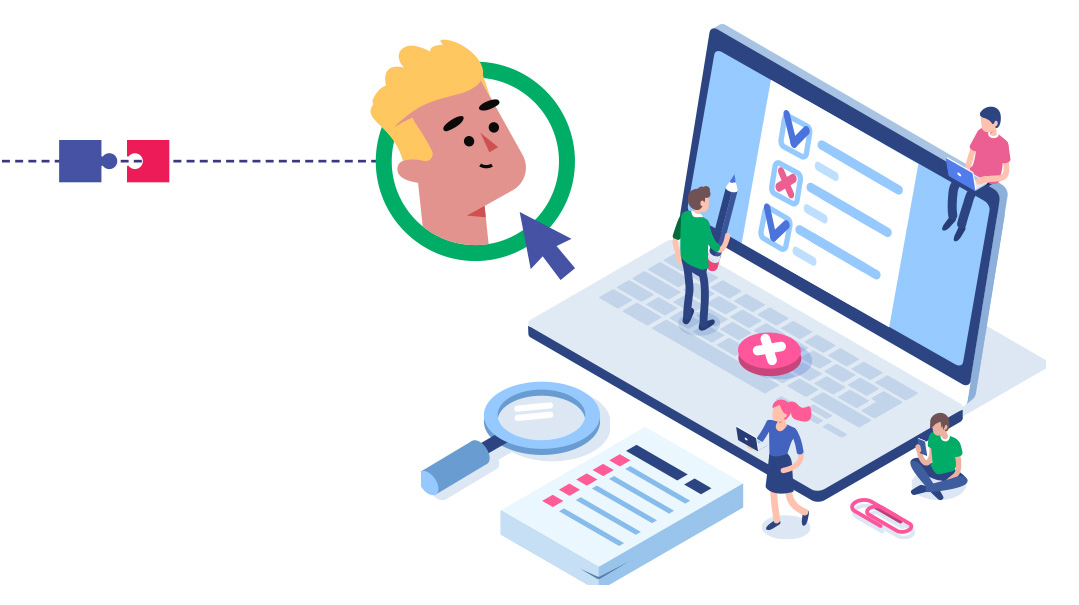Software Savvy: Part 17
| June 4, 2024RPA technology can generally do three things, and when brought together, it’s very capable and powerful tech

“I
am a changed man!” Shalom was all smiles when he welcomed me into his office.
I bit my lip to keep my triumphant whoop inside. But I was so glad that the screen scraping system I’d set up to take over a lot of the technical work in his travel agency was working out.
“It’s amazing! My employees used to get so upset with all the repetition. Now all the info they need is at their fingertips in the combined Excel file your system puts together every day. Unreal!”
Shalom was bursting to tell me about all of the ways the system had helped him, as he pulled some cold drinks out of his fridge and plopped them on the desk.
“That’s great! I’m so happy to hear. Sounds like you’re all set.” I twisted the cap off a bottle of Coke. “Did you call this meeting just to celebrate?”
Shalom got businesslike fast.
“The system is great, and I appreciate everything that you did. But at the end of the day, the files the system creates are still not that user-friendly, and I feel like maybe this screen scraping system can do more for us.” He drummed his fingers against each other. “It would be amazing if it could also check our clients’ current flight information and download their itineraries for us — it can do that, right?”
I smiled. Shalom was starting to realize how far he could get with the right tech.
“Well,” I responded, “There isn’t much more the screen scraper can do alone. The system we set up uses its functionalities to the max. But having said that, there’s a different system that’s a step up from screen scraping that might be worth looking into.” I set down my Coke. “What do you think, ready to take it up a notch?”
Shalom nodded eagerly.
“Ready.”
What is RPA technology?
RPA stands for robotic process automation. Similar to screen scraping software, it’s software that interacts with the computer in the same way a human does. That’s where the name robotic comes from.
So what’s the difference between RPA and screen scraping? RPA software generally includes a screen scraper in it, so anything that a screen scraper can do (such as extracting visible data from a site), RPAs can do as well. But screen scraping is only one part of RPA’s capabilities.
RPA technology can generally do three things, and when brought together, it’s very capable and powerful tech.
Firstly, as previously mentioned, it includes a screen scraper. That means that it can open any website and retrieve data from the website.
Secondly, it’s set up the same way automation is set up. (Hence the word automation in the name). Just like an automation is set up with different steps to run through, completing each step sequentially, RPA technology also allows you to set up a step-by-step process.
This is one thing that makes it so much more capable than just a screen scraper. Most screen scrapers can only do one thing, or only scrape one website in each setup. RPA technology can be set up with a limitless number of steps, so it can scrape unlimited numbers of websites in one run.
Besides the screen scraping aspect, like standard automation, RPA has hundreds of other tasks that it can run as steps. When you add a step to an RPA automation, you can choose to use a screen scraping action, but you can also use any other action that can be commonly done on the computer. (Remember, the technology interacts with the computer like a human, so an action may be to type, to click, to search, to open a new file, etc.)
It also has the standard actions that any automation platform has, like running through a loop (repeating a certain action multiple times); if/else statements (a statement that allows the automation to continue only if certain conditions are met); and other helpful actions that allow you to customize the automation to run exactly the way you need it.
The third unique feature that RPA has is the ability to interact with both the Internet (i.e., the browser) and your computer’s desktop. That means that your RPA automation can do things on the Internet, like scrape data from websites or search websites, and it can also do things on your desktop. Its ability to interact with the desktop allows you to set up automations that save data in apps (like creating a Microsoft Word document and saving data there), or it can work on any desktop app that you have on your computer.
“Okay, okay!” Shalom broke in. “I get it, this RPA thing can do a ton! But what does that mean practically for a business using it?”
I warmed up to my theme. “Believe it or not, RPA can basically replicate any work that a human would do on the computer. That means, if there’s any task that you do on the computer often, and you’re able to explain how to do it step by step, RPA can do it for you.”
“What? That’s unreal!” Shalom looked skeptical.
“Well, obviously, RPA can’t take over for you. RPA can only work in a case where the process is the same every time. If you notice, a lot of the work you do might be dependent on different things. For example, sometimes the location of a button that needs to be clicked may change, or locations of other actions on the screen may change. In those cases, RPA can’t do it for you. RPA needs to be able to copy your actions identically, and if the action items on the screen don’t look identical each time, the RPA won’t know what to do.”
That is the biggest catch with RPA, and I needed him to understand. Yes, RPA does seem like the magic wand of software — and often it is — but it can only work its magic in cases where the process is clear and identical each time.
“I hear.” Shalom placed his bottle on the desk. “So, assuming I’m interested in this, do you need to set it up for me, or can I test this out myself?”
“I would definitely tell you to take a look at it yourself. It doesn’t hurt to play around. Someone who’s not a developer or a software expert can look around and even create basic automation using RPA. If you want to set up anything complex, though, you’d need a software expert. RPA can get very complicated, very fast.
“To start out, you can take a look at Power Automate. That’s an example of RPA software. You’ll see very quickly for yourself that you’ll have a hard time setting up anything too complex.”
“Sounds great!” Shalom looked like he was itching to get to his computer to play with RPA tech himself. “I’ll get back to you when I’m ready for the actual setup.”
“So, very soon, then,” I said.
“Probably,” he admitted.
It’s always nice when there are great solutions for our clients.
(Originally featured in Mishpacha, Issue 1014)
Oops! We could not locate your form.







